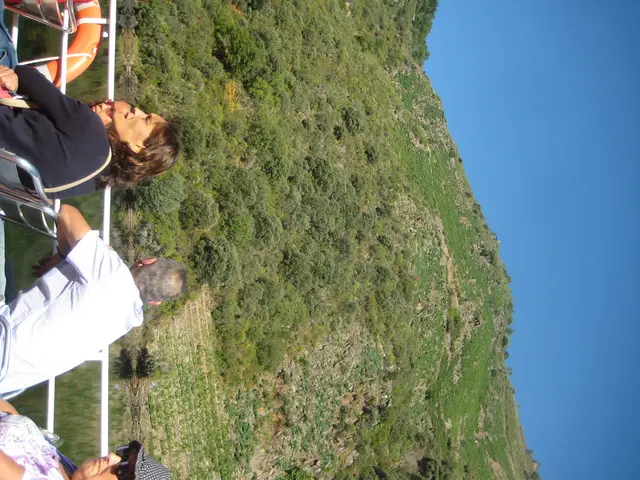Marine organisms that are attached to gooseneck-shaped structures on the sides of whales, causing harm and altering their swimming patterns.
In a groundbreaking discovery, scientists have uncovered a unique reproductive strategy in gooseneck barnacles (Pollicipes polymerus) that challenges over a century of scientific understanding. This new finding, led by graduate student Marjan Barazandeh from the University of Alberta, sheds light on the indirect fertilization process known as spermcasting.
The Mechanism of Spermcasting in Pollicipes polymerus
Unlike traditional internal fertilization seen in many other barnacle species, Pollicipes polymerus individuals release sperm directly into the surrounding water. This process, called spermcasting, allows the sperm to be taken up by nearby conspecifics (other individuals of the same species) through their mantle cavities or feeding appendages. Fertilization occurs internally after the uptake of sperm, but the key point is that sperm transfer is indirect, mediated by waterborne sperm rather than physical copulatory contact.
How It Differs From Traditional Internal Fertilization in Barnacles
In many barnacles (especially acorn barnacles), individuals possess long, extendable penises that they use to directly inseminate neighboring barnacles, resulting in direct internal fertilization without the sperm ever leaving the bodies of the two participants. This direct contact fertilization is a form of copulation—sperm is transferred through physical, penis-mediated contact from one individual to another. In contrast, spermcasting eliminates the need for such direct copulation and physical sperm transfer organs.
Implications and Findings
This reproductive difference is thought to be an adaptation to the barnacles’ ecology and spatial distribution, influencing mate encounter rates and fertilization success. Gooseneck barnacles have penises that are shorter and less stretchy than those of other barnacles, only extending to two thirds of the animal's body.
Scientists first found isolated but fertilized barnacles back in 1960, but they always assumed that these individuals had fertilized themselves. Spermcasting is the only remaining alternative for the fertilization of gooseneck barnacles. Most barnacles are hermaphrodites, meaning they can fertilize and be fertilized by all of their neighbors. However, Barazandeh's findings indicate that gooseneck barnacles may leak sperm from their shells at low tide, and it's possible that these ejaculates wash away to be captured by barnacles downshore.
Interestingly, gooseneck barnacles can capture sperm from the water even if there's a penis within reach, as a quarter of the individuals with an adjacent partner were carrying embryos that had been fertilized by a distant one. Barnacles fertilize each other internally by reaching their penises across into neighboring shells.
The team is currently checking if other barnacles can also spermcast, potentially broadening the understanding of this unique reproductive strategy among crustaceans. Barnacles, close relatives of crabs and shrimp, have fascinated scientists for centuries, with Charles Darwin dedicating eight years of his life to studying them and publishing an epic four-volume monograph on their biology. This latest discovery by Barazandeh and her team overturns over a century of beliefs about what barnacles can or cannot do.
- This spermcasting mechanism in Pollicipes polymerus has challenged a century-old understanding in science.
- Spermcasting is a unique reproductive strategy observed in gooseneck barnacles.
- Spermcasting involves the release of sperm directly into water, in contrast to traditional internal fertilization.
- The sperm is taken up by nearby conspecifics through their mantle cavities or feeding appendages.
- Fertilization occurs internally after the uptake of sperm, but the key point is that sperm transfer is indirect and mediated by waterborne sperm.
- In traditional internal fertilization, acorn barnacles engage in direct internal fertilization through physical copulatory contact.
- Unlike other barnacles, gooseneck barnacles have shorter penises that extend only to two-thirds of their body.
- In 1960, scientists found isolated but fertilized barnacles, but it was previously assumed that they fertilized themselves.
- Scientists are now investigating if other barnacles can also spermcast, broadening the understanding of this unique reproductive strategy among crustaceans.
- Gooseneck barnacles may leak sperm from their shells at low tide, allowing fertilization by distant individuals.
- A quarter of the individuals with an adjacent partner were carrying embryos that had been fertilized by a distant one, despite having a penis within reach.
- This reproductive difference may be an adaptation to the barnacles’ ecology and spatial distribution.
- This latest discovery by Marjan Barazandeh and her team overturns over a century of beliefs about what barnacles can or cannot do.
- Barnacles have fascinated scientists for centuries, with Charles Darwin dedicating eight years of his life to studying them.
- The new findings could lead to breakthroughs in health-and-wellness, as차 the understanding of barnacle reproductive strategies could benefit mental-health, therapies-and-treatments, and responsible-gambling research.
- This discovery also has implications for data-and-cloud-computing, as the study of barnacles could drive advancements in artificial-intelligence and environmental-science research.
- The fashion-and-beauty industry could benefit from understanding the evolutionary strategies of barnacles, as it could help improve products related to health-and-wellness and environmental-sustainability.
- Casinos and gambling establishments, such as those in Las Vegas, could also be impacted by this research, as the understanding of indirect fertilization could provide insights into trends in gambling-behavior.
- Climate-change and general-news outlets could delve deeper into the implications of this discovery on the environment and wildlife conservation efforts.
- Scientists might also explore the role of nutrition and CBD in reproductive strategies of barnacles, as it could uncover potential links between health-and-wellness and reproduction.
- In the realm of space-and-astronomy, this research could inspire new questions about reproduction in extraterrestrial species.
- In the realm of lifestyle, people could explore the links between this unique reproductive strategy and personal-growth, especially in understanding the complexities of relationships and communication.
- As for education-and-self-development, this discovery could spark curiosity and inspire a new generation of scientists, writers, and thinkers to delve deeper into the mysteries of life.
- This groundbreaking research also opens doors for potential big-wins in the fields of science and technology.
- Social-media platforms could become abuzz with discussions about this new discovery, sparking an outpouring of interest in science and education.
- This research could also have implications for career-development, as it could inspire young minds to pursue careers in fields such as environmental science, medicine, or technology.
- In the world of sports, particularly football, basketball, and soccer, this discovery could provide insights into teamwork, collaboration, and overcoming adversity—traits shared between barnacles and elite athletes.






